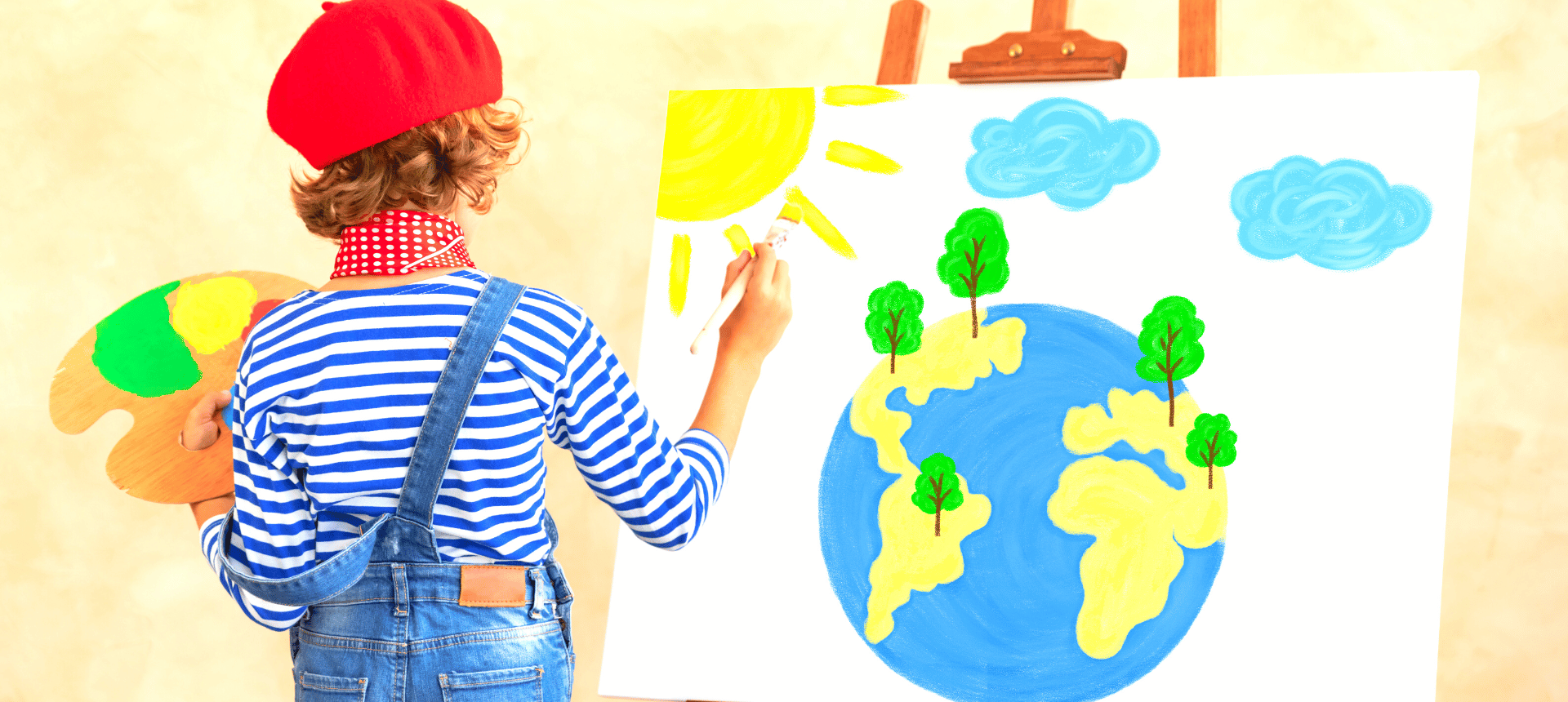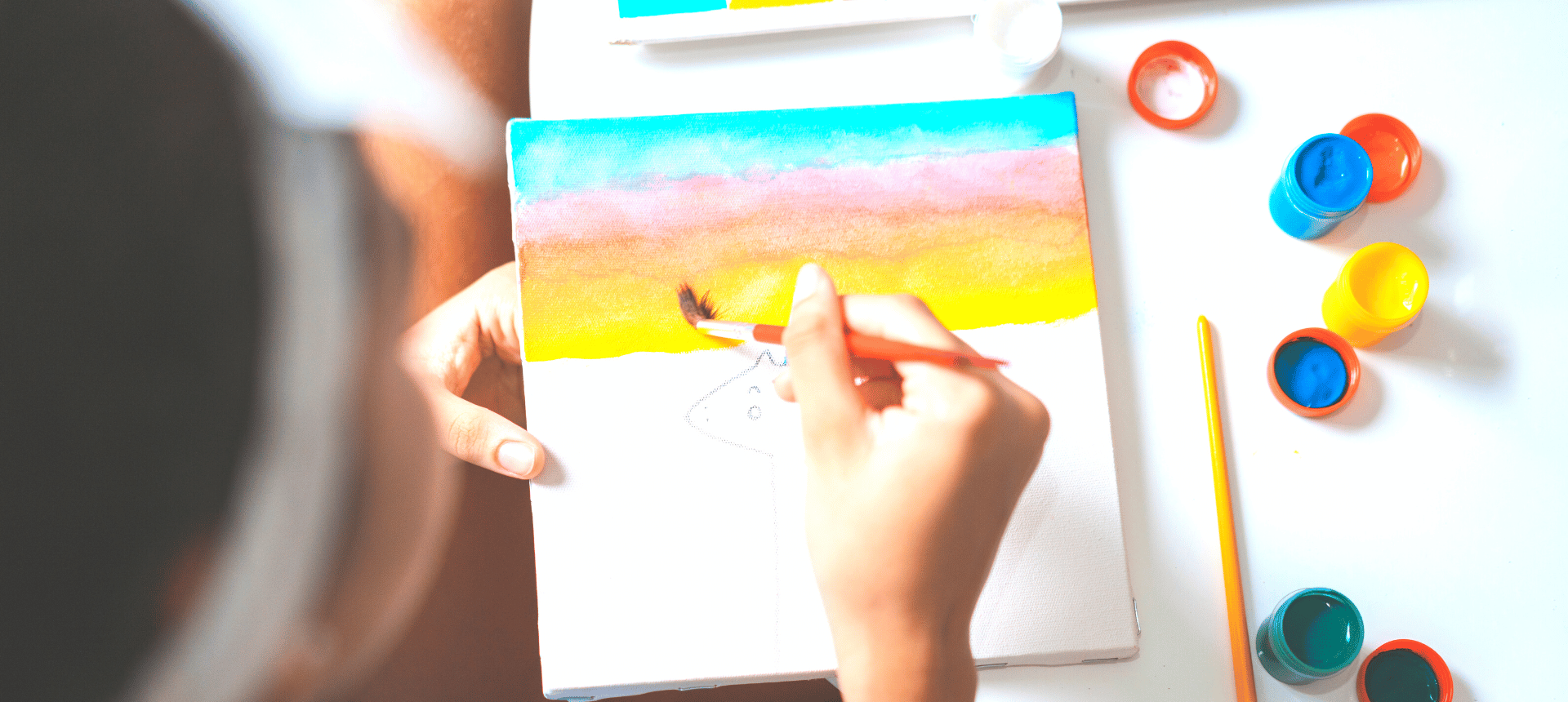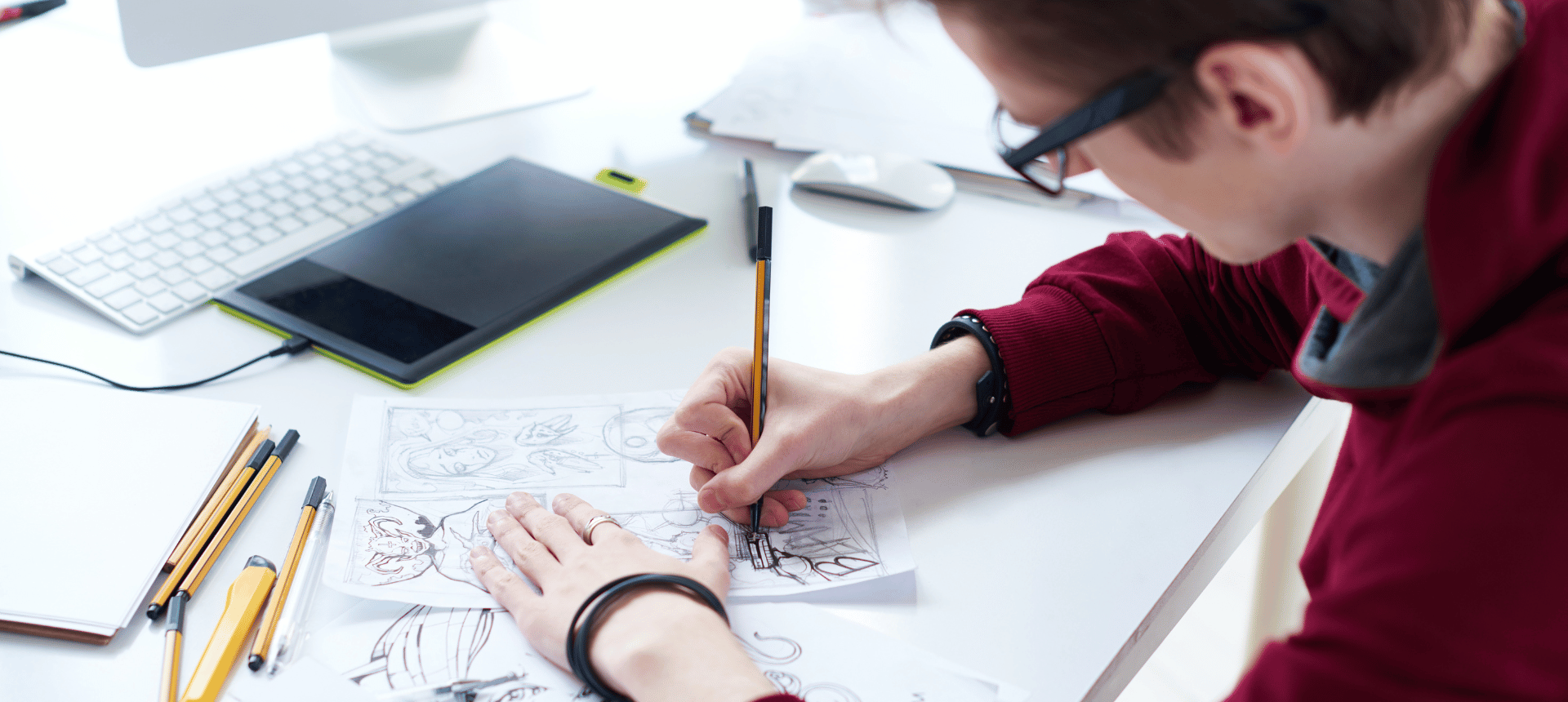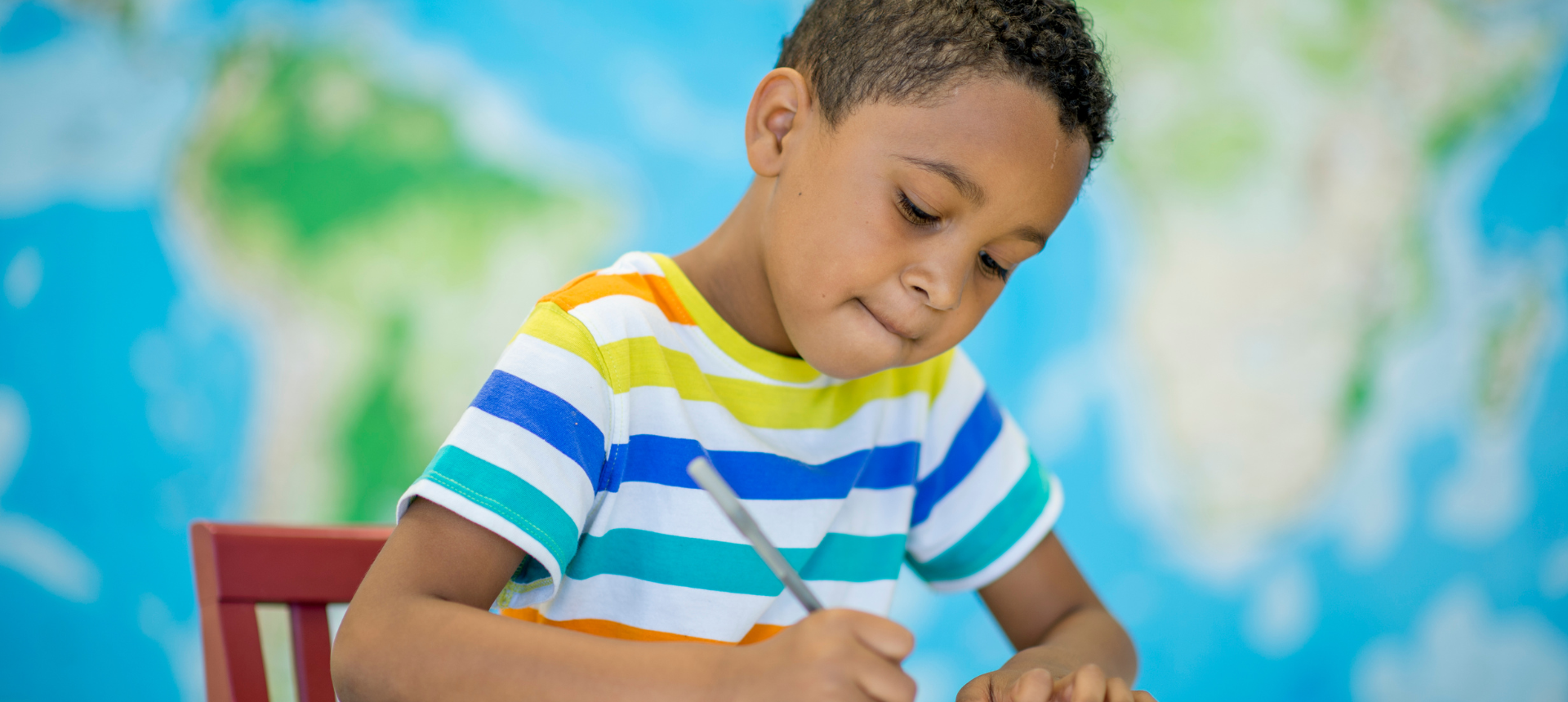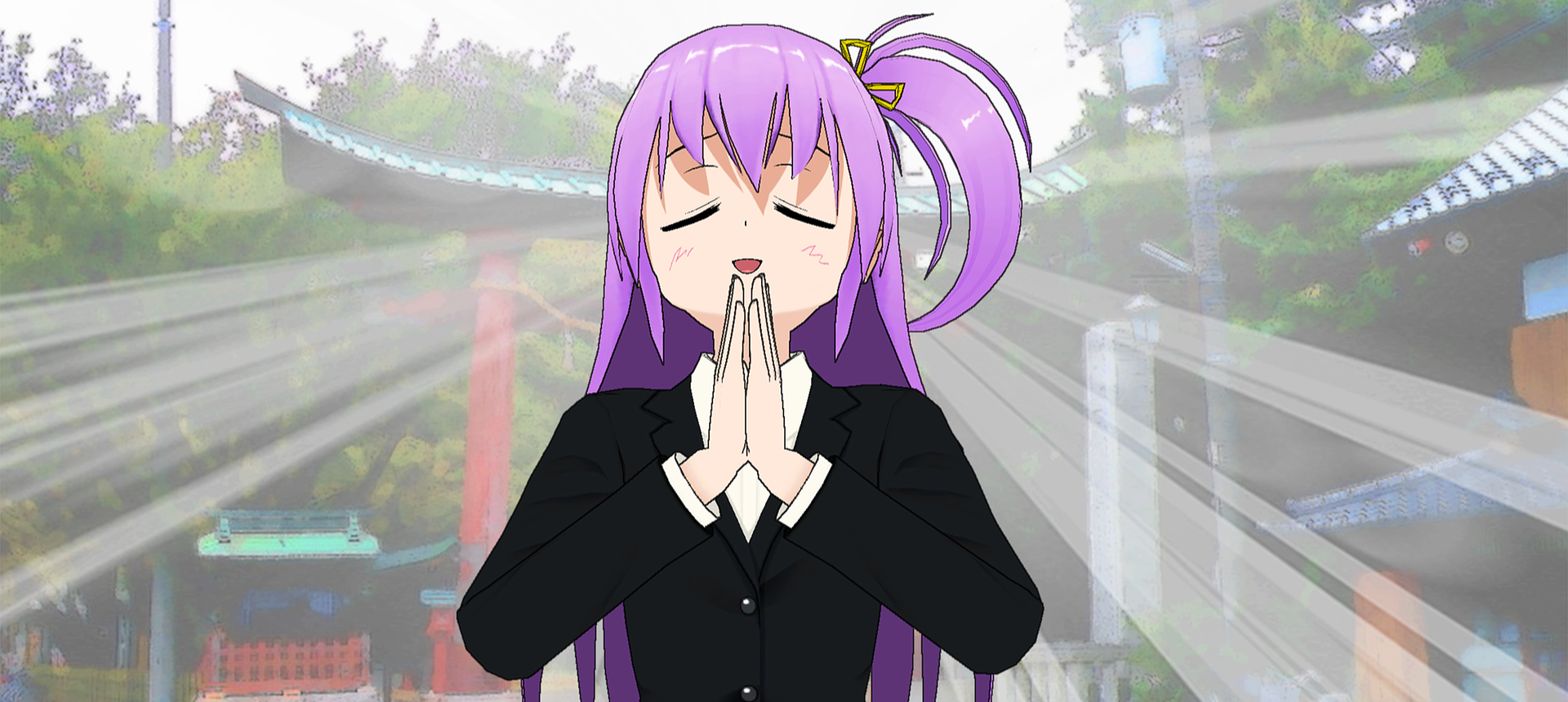Visual arts often get overlooked in education, and they are grossly undervalued. However, the inclusion of visual arts in education is vital for a child's future prospects. Here are 10 reasons why they are essential for every child.
Despite over a decade of decline in the amount of time spent in the visual arts in education, it could not be a more important time to include them as a staple to empower children to enter the 21st century workforce, as either an employee or entrepreneur.
Visual arts comprise of any type of art that creates works that are primarily visual in nature, and the main focus of visual arts is the creative expression through visual means. You can find examples of over 20 different types of visual art in our recent blog post, What Are the Visual Arts?
Visual arts are vital for the children of today
Following years of underinvestment in arts education in the UK which, as a result, saw a massive decline in teaching hours in schools, and an increased focus on traditional academic subjects to meet the requirements of national educational targets such as the eBacc, children are being disadvantaged.
In a world of innovation, today's employers are putting an increased premium on creativity, in addition to other skills such as confidence, motivation, resilience, decision-making skills, teamwork, flexibility and originality. All of these can be developed by studying the arts. Gopnik stated: "When we're children we're devoted to learning about our world and imagining all the other ways that the world could be. When we become adults we put all that we've learned and imagined to use."
So let's look at the 10 reasons an education that heavily includes the visual arts is essential for your child today.

1. Visual arts help to develop and refine fine motor skills
Fine motor skills involve using small muscles in the hands, wrists and fingers to make movement, and also trains hand-eye coordination. These skills are really important because they aid in the growth of intelligence throughout the different stages of development. Earlier on, in early childhood, fine motor skills are used to be able to make hand movements in preparation for writing and then for writing itself. Developing strength, flexibility and dexterity in the hands will enable a child to not only be able to write more easily (and in later teenage years sustain longer periods of writing and penmanship when sitting exams), but they will also be able to perform other critical tasks such as turning pages of a book carefully, using scissors and working with other materials, and even squeezing toothpaste and other liquids from a bottle, such as glue or ketchup!
When a child makes marks on paper, they are learning how their hands work. When they mould clay, they are strengthening their muscles. When they are finger painting, or drawing shapes or cutting wavy lines, they are practising the movements needed for letter formation. They build dexterity when using different sizes of paintbrush, fold paper when creating origami, or use a needle in sewing or other textile work.
As children get older, and spend more time on devices and electronics, their fine motor skills are also not practised enough. Thumbs may get a good workout on controllers, but in the main, most motor skills are neglected as children go on screens. Activities such as painting, colouring (including mindful colouring), origami, woodwork, building and painting models, making jewellery and friendship bracelets, knitting and crocheting can all help to continue developing these skills.

2. Visual arts help to improve social skills
Often you may think that art is a very individual thing to do, but there are many opportunities for positive interactions, collaborations and group work within visual arts. Art clubs and classes also bring children together to learn an art skill or style, while still enabling that socialisation to take place. Children can discuss what they are creating, help and assist each other, and even be creative together.
Through art, children can develop empathy and express their own emotions through a creative outlet, giving them an opportunity to work things out on to paper or the canvas of choice. Art therapy is used remedially to help people explore difficult thoughts and feelings, and so it goes to say that naturally, engaging in art on a regular basis has value for emotional wellbeing. In addition, exposure to different visual arts from different cultures can increase cultural awareness and appreciation.

3. Visual arts improve decision-making abilities
In art, there is a great freedom to make your own decisions. You can decide which media to use, which colours, what their art will look like, how big it will be and what the subject will be about. There are no set rules, and so every artist has to make their own decisions, even when following an instructional-based tutorial where individual steps to recreating an image or object are given. There is the decision of whether to follow the instructions to the letter, or inject their own creative mark on the piece. Also, when things don't go to plan, there is also the opportunity to make further decisions as to what the next steps will be.
Having regular creative experiences means more practice in decision-making, and contributes to greater confidence in those decisions.

4. Visual arts help a child develop critical thinking skills
At the very beginning, as we expose children to art and different media within art, we are inviting the children to practise their observation and analytical skills. Through the study of the various visual arts and artists, children can start to experience them for themselves, and start to decide which art styles they like and which arts they like to take part in. They learn evaluation skills and learn to critique the work of others.
Looking at individual aspects of a piece of artwork, seeing how the artist has constructed them, whether that be by brush or pencil marks, stitches in crochet, folds in origami, pixels in digital art, colours in jewellery making, and so on, helps to not only understand the skill and effort that has gone into creating it, but it also helps to contribute to then standing back and seeing the bigger picture or piece as a whole.
Critical thinking also requires out-of-the-box thinking, and so the more creative a person is, the greater their ability to be able to think critically about everything, not just art.

5. Visual arts help to develop logical thinking skills
When it comes to logical thinking skills, children can develop these through visual arts, both passively and actively. One of the first things they need to decide is how much space they will need in order to create something - work space and also the 'canvas' in whichever medium they decide to use. They need to decide on which colours they are going to use, if it fits the brief either they have been set or set for themselves when they start out with the creation process, and also, if time is a limiting factor, how long will it take them to create it? Can they complete it in the timeframe available to them?

6. Visual arts increase self-confidence
Research has been conducted by University College London where they measured how often children participated in the arts (from 'never' to 'most days'), and then using an abbreviated form of the Rosenberg Self-Esteem Scale measured their self-esteem and confidence in general. The researchers, Hei Wan Mak and Daisy Fancourt, reported that:
"Among the matched sample, children who participated in arts activities most days were significantly more likely to have higher levels of self-esteem than those who participated less often... [Creating art can] validate the uniqueness of an individual, which gives rise to a sense of accomplishment and to feelings of self-worth... the arts have been shown to support a sense of social identity and can encourage goal-directed behaviour and enhance social resilience."
They also noted that it was the participation, rather than the ability and skill level of the child, that was important.
As children improve their skills, and learn what they are capable of creating, their confidence also increases. The sense of pride and achievement they gain when they can stand back and look at what they have created feels good, and when others value and praise their accomplishments too, this also gives a confidence boost. Children are also able to focus better and also deal with criticism in a more constructive way, so as to not crush their confidence either.

7. Visual arts help to develop self-determination skills
Self-determination refers to a person's ability to manage their own life and make their own choices. Through art, children develop self-advocacy by justifying their work, the materials and techniques they have used, and why they chose the subject matter. They increase their creativity through choosing their own unique ideas and become very self-aware of what they can and cannot achieve, and what their artistic strengths and weaknesses are. They also learn to be assertive through explaining and justifying their choices in the creative process.

8. Visual arts can help to improve ICT skills
Not all visual arts will help to improve computing and tech skills in children, but there are more and more opportunities for them to be able to do so. Digital creation of art, video game design, graphic design, using programmes like Canva, Procreate, Photoshop, InDesign, graphics tablets, smartphones and cameras to create art, videos, games, is becoming more and more popular and used within visual arts. There also may be a combination of digital and physical art creation, for example designing a 3D object and using a 3D printer to create something, or using a Cricut machine to cut out your design from a file you have created.

9. Visual arts can increase retention and understanding of other subjects
Integrating the arts into other subjects can be highly beneficial to increasing understanding and subject recall. The possibilities are endless, from colouring and sketching parts of the body, to creating a diorama of the rainforest, to combining persuasive writing, science and economics with digitally creating a travel brochure for Mars. Creating videos, posters or stop-motion animations on different issues or topics can also increase learning of that subject.

10. Visual arts prepare children for future employment
In addition to the possibility of selling their art or becoming an entrepreneur using their artistic talents, there are many future benefits for children that can be gained through regular immersion in the visual arts. Being able to think outside of the box, innovate and be creative is highly valuable to future employers, and is something that many fear is lacking in a lot of young people entering the workforce. Sir Ken Robinson in his TED Talk Do Schools Kill Creativity, said that:
"Creativity now is as important in education as literacy... Picasso once said this, he said that all children are born artists. The problem is to remain an artist as we grow up. I believe this passionately, that we don’t grow into creativity, we grow out of it. Or rather, we get educated out of it... Our education system has mined our minds in the way that we strip-mine the earth: for a particular commodity. And for the future, it won’t serve us. We have to rethink the fundamental principles on which we’re educating our children."
The Digital, Culture, Media and Sport Committee (2019) said in their report Changing Lives: the social impact of participation in culture and sport:
"We are deeply concerned by the evidence we received around the downgrading of arts subjects in schools, with all the consequent implications for children's development, wellbeing, experiences, careers and, ultimately, life chances."
In addition, the CBI has talked a lot about the Fourth Industrial Revolution, where the boundaries between the physical, digital and biological worlds are blurred. They state that the skills and competencies that employers will require will be those of decision-making, team working, flexibility and originality. Resilience, decision-making and other skills that the arts foster are also going to be essential, and they also express their concern that if art education continues to decline, all children, and especially those who are disadvantaged, may be locked out of educational opportunities because of a skill deficit.
"Government should invest more in “STEAM” skills that will be most useful to people in this increasingly automated world. This means focusing more on STEM subjects (science, technology, engineering and mathematics), but also exploring how art and design (the “A” in “STEAM”) can feature at the heart of innovation."
PwC (2018) UK Economic Outlook
One of Outschool's main aims is to Set Learning Free by providing an immense variety of opportunities for children all over the world, including through the visual arts. Outschool has teachers who teach classes in all of the 22 examples of visual arts that are mentioned in the previous blog post, and Outschool also has teachers that teach visual arts that aren't even on the list. The opportunities for your child are endless, so head over to the Outschool website and take a look at all the art classes available there.
